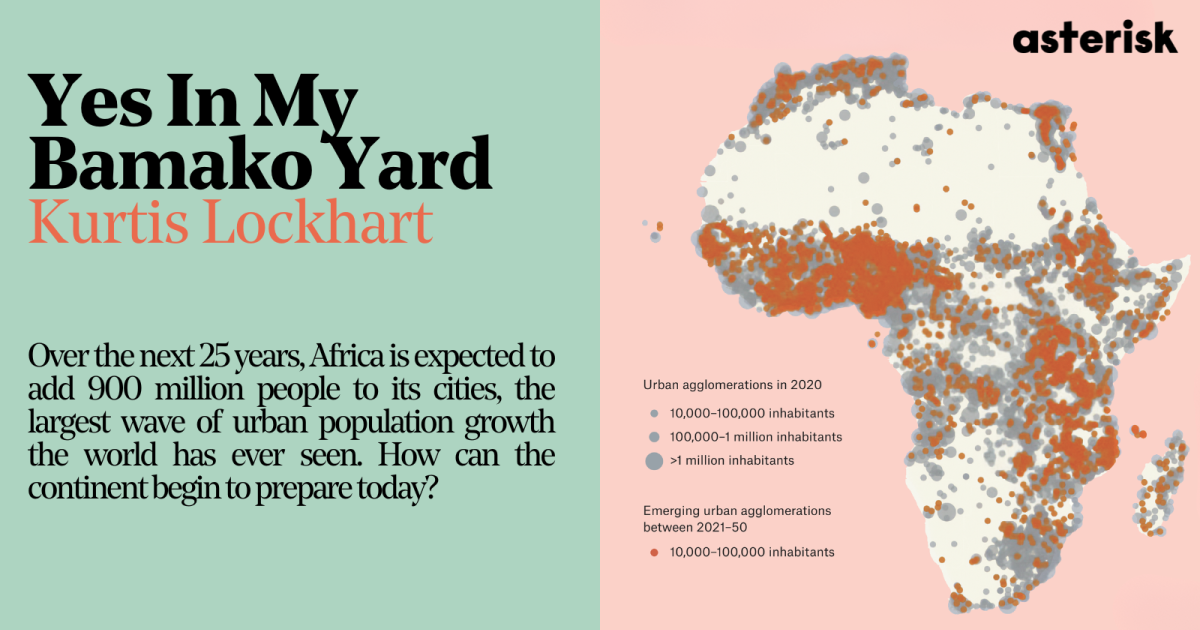
Yes In My Bamako Yard
Over the next 25 years, Africa is expected to add 900 million people to its cities, the largest wave of urban population growth the world has ever seen. How can the continent begin to prepare today?
YIMBYs have been winning in some of the most productive cities on Earth. Legislative victories in California and the UK have made it easier — if still not easy — to build. The logic of pro-housing reforms is both straightforward and well-supported: Fewer regulatory barriers to building mean more houses, which leads to more affordable housing and, in turn, more people able to live in dense cities that offer all the benefits of urban life.
City life makes workers smarter and more productive. Urban density spurs greater innovation and raises wages. More people concentrated in compact areas translates into significantly lower emissions per capita compared with rural and suburban areas. Cities are, in short, humanity’s engines of economic growth and prosperity. On average, with every 10% increase in the share of a country’s urban population, its output per capita increases by 30%. And there are no exceptions to this phenomenon; no country has gotten rich without undergoing urban transition. 1 A full 80% of private sector jobs generated between 2010 and 2020 were created in large cities. 2
But while this connection between cities and prosperity holds true in both rich and poor countries alike, the relationship seems to be weakening in fast-urbanizing developing countries today. 3 This is especially true of sub-Saharan Africa. Many African nations are reaching relatively high levels of urbanization without nearly the same income gains achieved in other regions.











